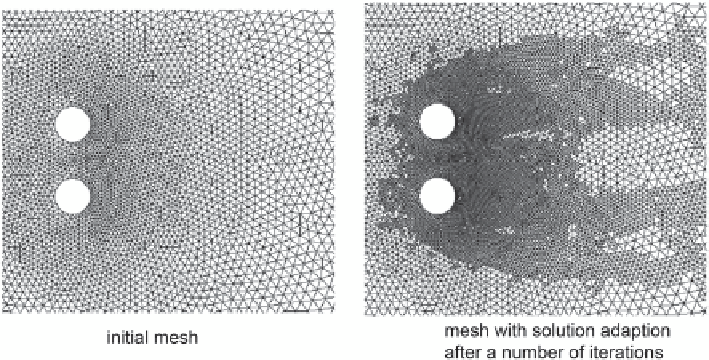Biomedical Engineering Reference
In-Depth Information
ments is not always known. One method to overcome this uncertainty is to refine
the mesh by
solution adaption
. This allows a mesh adaption based on both geomet-
ric and numerical solution data in regions where they are needed.
This employs the solution flow field to locate mesh nodes in the physical flow
domain. During the solution process, mesh nodes in the physical flow domain
adapt
to the evolution of large flow gradients. Hence, the actual mesh nodes are constantly
in motion during the solution and become stationary when the flow solution ap-
proaches a quasi-steady state condition. An adaptive mesh is therefore intimately
linked to the solution and alters as the flow field develops unlike the stretched mesh
described above where the mesh generation is completely separate from the flow
field. For this purpose, unstructured meshes are well suited in automating the gen-
eration of elements such as triangular or tetrahedral meshes. Figure
6.19
shows an
adaptive mesh for flow over two cylinders using a triangular mesh. For this flow
problem, the wake region has been adapted to capture the formation and shedding
of vortices behind the two cylinders.
6.4.4
Mesh Independence
A mesh independence study is performed to determine the suitability of the mesh in
terms of its number of elements, and to yield an estimate of the numerical errors. In
addition it is used to determine the minimum mesh resolution required to generate
a solution that becomes independent of the mesh size used. Ideally, at least three
significant different grid resolutions should be tested, where each subsequent mesh
is approximately doubled in each direction. If this is not feasible, selective local
refinement of the grid in critical flow regions of the domain can be applied. A flow
Fig. 6.19
A demonstration of solution adaptation through the use of triangular meshes for the fluid
flowing over two cylinders

Search WWH ::

Custom Search